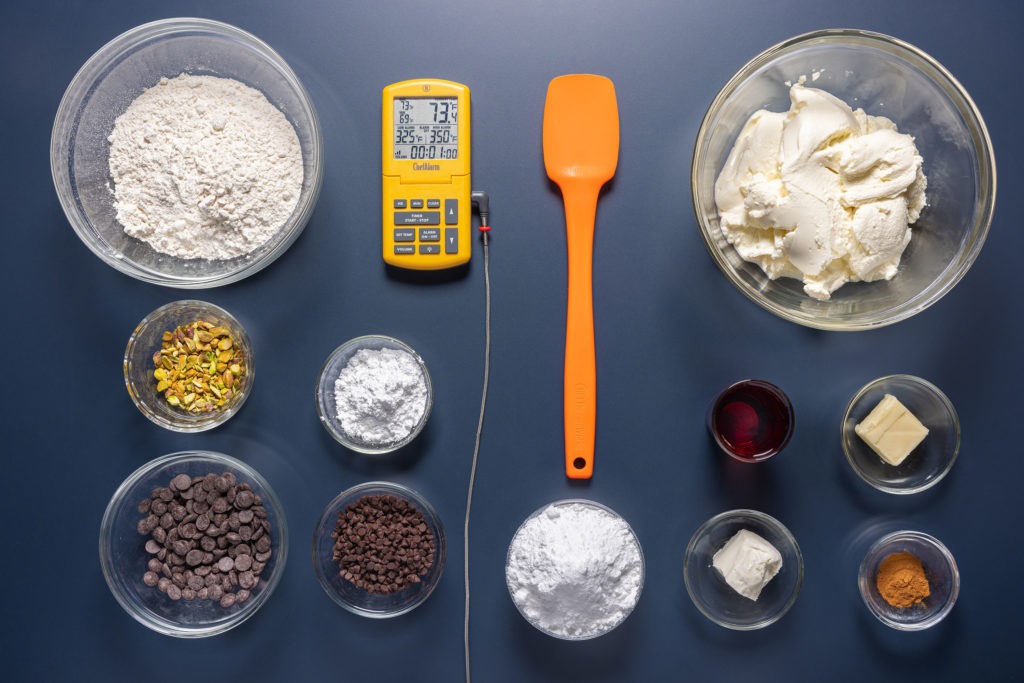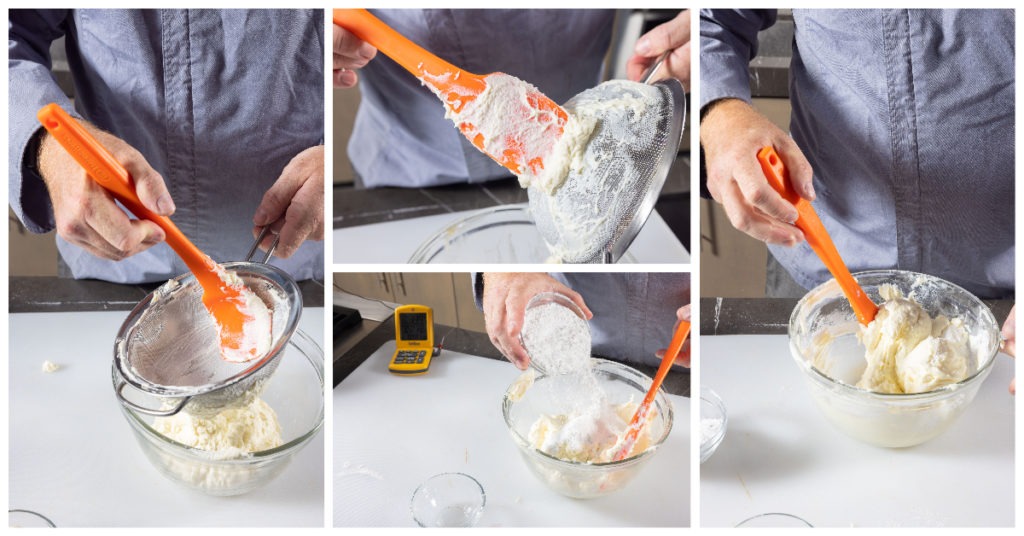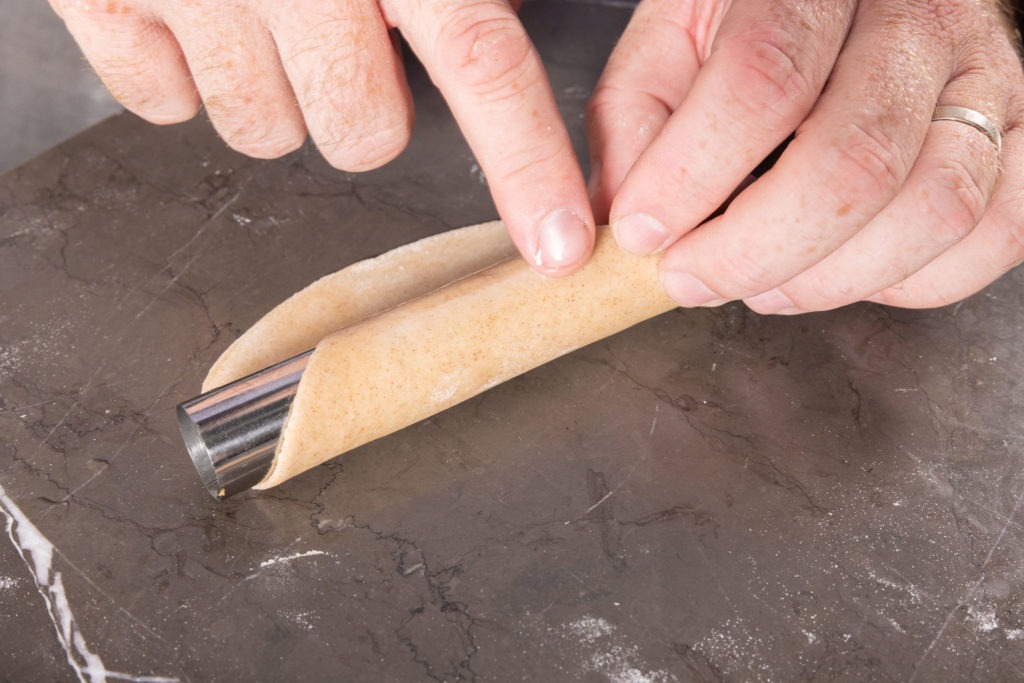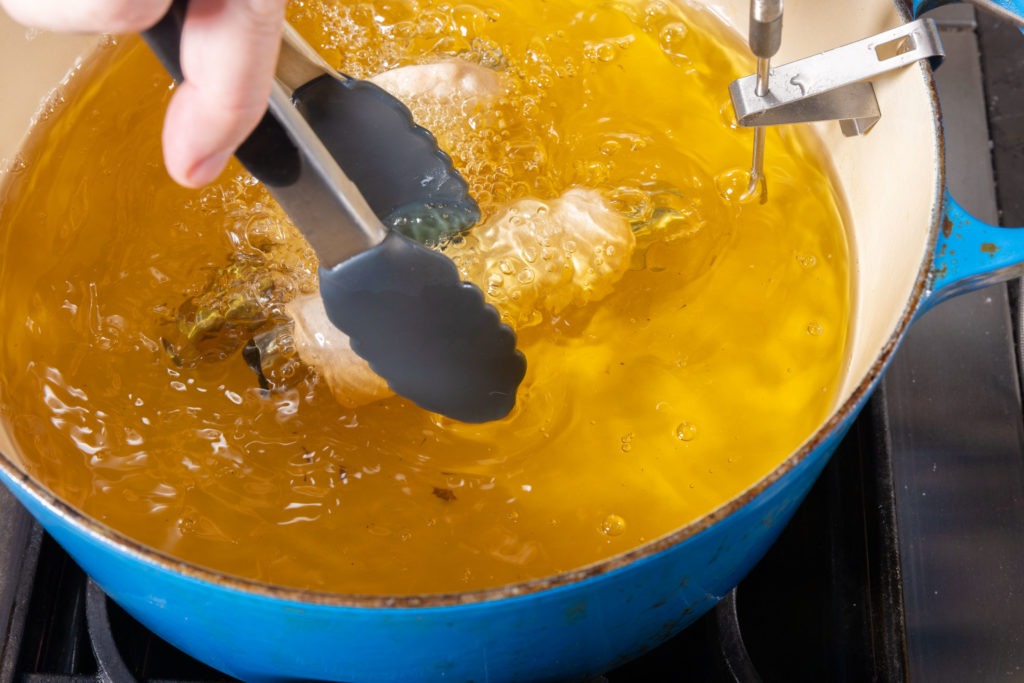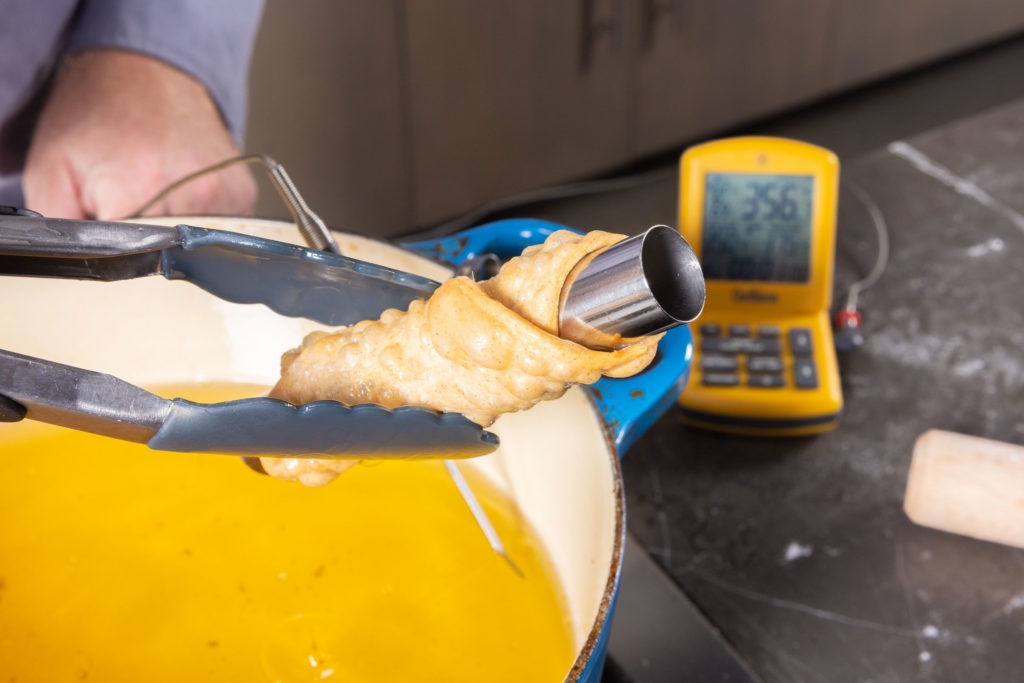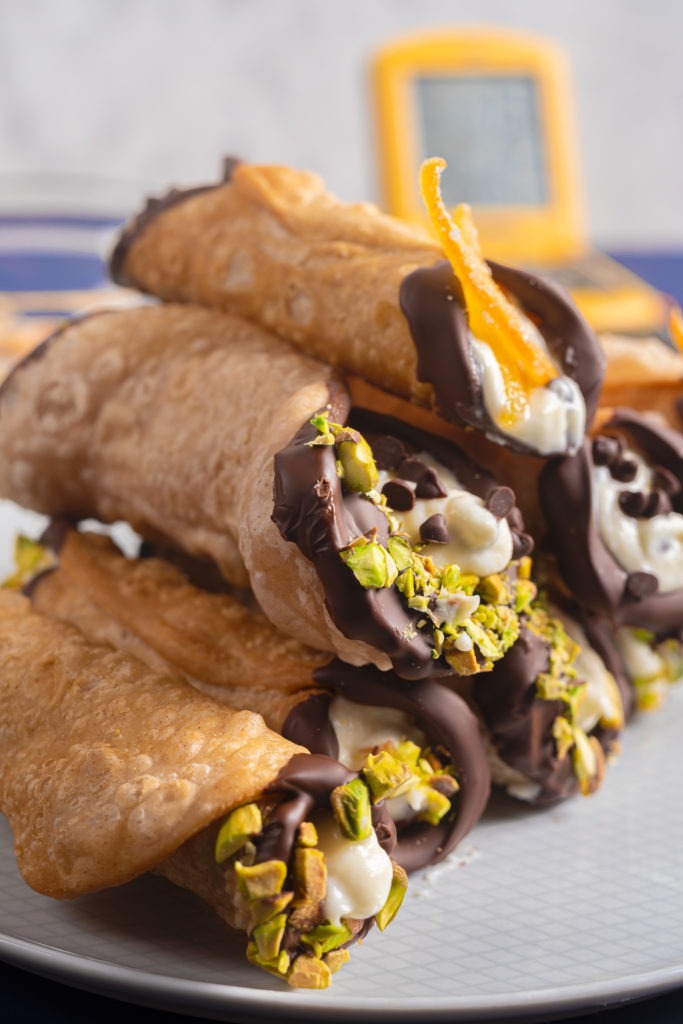Description
Adapted from recipes by Binging with Babish and Bon Appétit.
Ingredients
For the shells:
- 250 g flour
- 30 g powdered sugar
- 3 oz (90 ml) white wine
- 1 oz (30 ml) red wine
- 2 Tbsp butter
For the filling:
- 24 oz whole milk ricotta, drained for a few hours or overnight (see note)
- 2 oz fresh goat’s cheese (chevre)
- 1 C superfine sugar (see note)
- Heavy pinch of kosher salt
- ~3/4 C mini semisweet chocolate chips
For frying:
- 1 egg white, whisked with a tablespoon of water
- High smoke-point oil (tradition calls for lard; we used a combination of lard and corn oil and it was great) to fill a pot with about 3″ of oil.
For garnish: chocolate for melting, chopped pistachios, candied orange peel, whatever else you want
Special tools: Cannoli forms, a 4″ round cutter
Instructions
Make the dough for the shells
- Pulse together the flour, powdered sugar, and cinnamon in a food processor.
- Add half the wine and pulse until sandy.
- Add the butter and pulse again a few times.
- Add the rest of the wine and run the processor until the dough just comes together in a ball.
- Turn the dough out onto the counter and knead it 2–3 times. Put it in a bag and place it in the refrigerator to chill and rest for at least 30 minutes.
Make the filling
- Soften the goat cheese by mashing it a bit with a rolling pin (or kneading it in your hands).
- Place the ricotta and chevre in a fine sieve or strainer and press it through with a silicone spoonula, scraping it from the bottom of the sieve into a bowl. Add the salt.
- Add the sugar 1/4 C at a time, tasting between additions. Adding too much sugar will make the filling too runny, so only add as much as you need.
- Keep the chocolate chips in reserve until right before filling.
- Place in the refrigerator to chill until ready to use.
Fry the shells
- Start heating the oil in a large, heavy-bottomed pot. Use a ChefAlarm and a pot clip to monitor the oil temperature, setting a high-temp alarm for 350°F (177°C) and a low-temp alarm for 325°F (163°C).
- Roll the dough out on a lightly-floured counter until it is very thin—about 1/16″.
- Cut the dough into rounds. Gather the scraps, reroll and cut into another round or two.
- Place a cannoli form at one edge of a dough round, and roll towards the other edge, dipping a finger in the egg white/water mix and wetting the dough where it will join.
- Press the joint down tight, rolling it a little bit with the cannoli form.
- Drop a few cannoli into the hot oil, being very careful of splashes, and cook for 2–4 minutes.
- When the cannoli are bubbly, golden brown, and floating, remove them to a wire rack to drain.
- Be careful of the cannoli-form tube being filled with oil! pour it out into the pot again before moving it to the rack to cool. It is easy to burn yourself with that cascade of hot oil.
- As soon as the forms are cool enough to remove from the cannoli, remove them and continue to cook the rest of the rounds in batches.
Stuff the cannoli
- If dipping the ends of the cannoli in chocolate, melt the chocolate and dip them. Dip the chocolate in nuts, if desired. Place them in the fridge to harden for a few minutes.
- Once the cannoli shells are all cooked, prepare the filling by stirring in the chocolate chips until it is as chunky as you want it to be. 1/4–1/2 C should do.
- Put the filling into a pastry bag with a 1/4–1/2″ opening.
- Pipe the filling into the cannoli from each end, inserting the tip into the pastry and filling as you pull the bag slowly towards the opening.
- Top the cream with more mini chocolate chips, chopped nuts, candied orange peel, etc.
- Serve!
Notes
Superfine sugar can be hard to find. If you can’t source it, put a cup of sugar in a good blender and blitz it at high speed for a few seconds.
Stirring the ricotta before draining it will help it drop excess liquid. If you don’t have time to strain the ricotta, you can proceed, you’ll just end up with a less-firm filling.
It is best to eat them as close to their preparation as possible if you want a crisp shell. Refrigerating stuffed cannoli will soften the pastry. You can prepare the shell and the filling in advance by a day and fill right before service.

